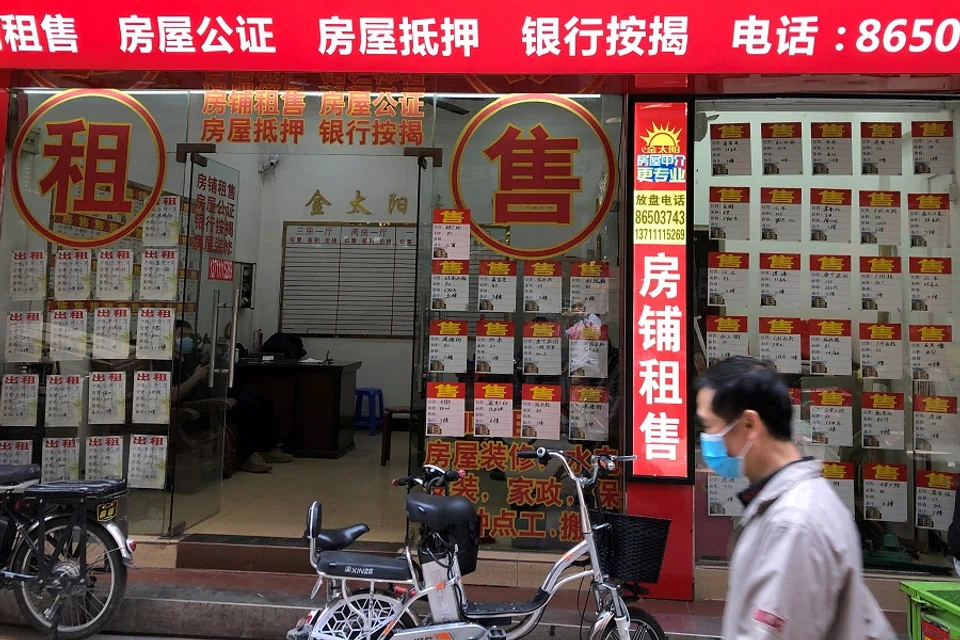Bartering garlic for homes: China's uphill fight to revive the real estate market
To revive China's property market, local governments in some cities have implemented a slew of changes to ease property restrictions, with some even allowing the use of crops as a down payment for a home. However, these policies present many risks to the market. Chinese academic Yi Xianrong believes that a return to a consumption-led market is the only viable way to lower the risk in China's property market.

What's the current state of China's real estate market? Based on property transactions in June, the real estate sector is exiting its worst phase as month-on-month figures show a positive growth. However, on a year-on-year basis, the decline remains dismal.
Flailing property market
China's property market has been falling since the start of the year, with more pronounced negative growth in May. This trend could persist in June, as new home sales by floor area in 100 Chinese cities are forecast to decrease by 41% year-on-year, despite an increase of 21% month-on-month.
This is despite measures taken by local governments since the start of the year. Data from real estate consultancy firm CRIC (克而瑞) show that some 134 Chinese cities have implemented 223 measures as of 24 May, including the easing of restrictions on purchase, sales, price and loan; cutting housing loan interest rates and down payments; reducing tax; and providing housing subsidies, relocation housing vouchers and compensation.
Some cities have even introduced barter-style property transactions to revive the housing market. However, such erratic policies not only discredit previous polices to stimulate demand in China's flailing property market but may also pose bigger risks.
Over the last 20 years of such policies have resulted in a property market dominated by speculative investors who often outbid consumers.
China's real estate market is geared towards both consumers and investors. However, regulatory policies, including credit and tax policies, do not differentiate between the two and are not responsive to this dual nature of China's housing market. Over the last 20 years of such policies have resulted in a property market dominated by speculative investors who often outbid consumers.

Hence, regulatory policies have often been used as a marketing tool for the property market. When local governments tightened policies, there was always a time lag between policy announcement and implementation, during which local home sales would spike. When the reverse happened and regulatory policies were loosened, marketing tactics would be even more direct, as seen by the promotion of recent regulatory policies introduced by local governments.
Ultimately, these regulatory policies have resulted in property oversupply and home prices shooting up. Indeed, property prices in China have been on the rise over the past 20 years.
In most of China's third- and fourth-tier cities, it is common for each member of a household to own a house (for example, a family of three would own three homes).
Despite having the world's largest population, China's per capita residential space is also one of the highest in the world. According to China's National Bureau of Statistics, the per capita living area of Chinese households reached 41.76 square metres by the end of 2021, with an average living area of 111.18 square metres per household.
In most of China's third- and fourth-tier cities, it is common for each member of a household to own a house (for example, a family of three would own three homes). The total value of China's housing market was over US$62.6 trillion in 2020, which far exceeds the figures for the US or Japan. A housing surplus is common in most Chinese cities.

If China's property market continues to operate in such a manner, its investment- and speculation-led nature cannot change - nor is it expected to. So, over the past few years, the central government's regulatory policies have focused on stabilising property prices, land prices, and expectations.
However, the "three red lines" policy that has been in place since late 2020 has put property developers in a plight, and homeowners face great uncertainty as to whether their off-plan property (期房, property that is purchased with construction not yet completed) will be constructed.
Extreme measures increase risks
The pandemic had a major impact on business owners, ordinary people, and families; and many people have had to cut back as they dipped into their savings. The impact on private tutoring, online gaming and platform companies have also driven up unemployment rates among young white-collar workers.
Coupled with factors such as a rapid decline in population growth, the situation has led to a sharp fall in housing prices, a reversal in market expectations, and a rapidly shrinking property demand in many cities since the second half of 2021, thus shifting to a consumer-led property market.
Hence, to revive China's property market, market expectations will have to be completely reversed. The market will have to go back to being driven by investment and speculation. So, many Chinese cities are introducing limits to the discount in property prices - when promoting the sale of properties, developers cannot reduce prices by more than 15%.

However, in the housing investment market, only when housing prices go up will investors enter the market, especially when the market expectations are for prices to increase. Otherwise, investors will steer clear if property prices fall, even by 15%.
On the contrary, this would seriously impede developers from making returns through volume in place of price, adding to the risk of whether developers can deliver on building the homes. So, the results of the market-rescue policies rolled out by local governments would depend on whether China's property market goes back to being driven by speculation and investment, and a reversal of market expectations, otherwise the impact of these policies will be limited.
... the barter trade property sales tactics that many Chinese cities are rolling out are ineffectual in driving housing demand, and could instead increase the risks.
As for barter-style property transactions, such as making down payments for homes with wheat or garlic, farmers are seemingly given a good price for their crops and encouraged to purchase homes in the cities; but such transactions depend on developers selling the crops at a profit, or at least break even. If the crops cannot be sold or are sold at a heavy loss, developers would be at risk of running out of funds and unable to complete the housing projects.
For example, garlic generally goes for 5 RMB per jin or katty (approx. 500 grams), but at the farmers' market in Qingdao, the crop can go as low as 2 RMB per jin, or 2.5 RMB per jin at wholesale. Given the developed nature of the platform economy, how could the price in Qingdao not be known in Henan?
Thus, the barter trade property sales tactics that many Chinese cities are rolling out are ineffectual in driving housing demand, and could instead increase the risks.
Long-term accumulated risks exposed
While it looks like local government-issued home purchasing vouchers and relocation housing vouchers - an all-round beneficial policy that allows subsidies and discounts when buying homes - are beneficial for homebuyers and would help to stimulate local property markets, the policy relies on the credibility of the local governments and the assurance that the policy will boost local property and land markets.
If the corrective policies lead to the continued rise in property prices, it might just be a matter of time; the risk in future might be even greater.

If the government misses the targets for the "voucher policy", voucher holders, including the people whose homes have been demolished, property developers and commercial banks, will be in a precarious position. The local governments may not be able to fulfil these vouchers on the market, especially as city governments are facing severe debt.
The falling property prices would expose all the risks that have long been present in the Chinese property market. If the corrective policies lead to the continued rise in property prices, it might just be a matter of time; the risk in future might be even greater. Going back to a consumption-led market is the only viable way to lower the risk in China's property market. However, it won't be a smooth road.
Related: Can China achieve a soft landing for its housing market? | How China's housing market landed in the deep freeze | Why China is regulating the property market | Property conundrum: Chinese society disagrees over how much property prices should fall | Will clampdowns on China's property sector lead to economic turmoil?



![[Photos] Fact versus fiction: The portrayal of WWII anti-Japanese martyrs in Taiwan](https://cassette.sphdigital.com.sg/image/thinkchina/3494f8bd481870f7c65b881fd21a3fd733f573f23232376e39c532a2c7593cbc)

